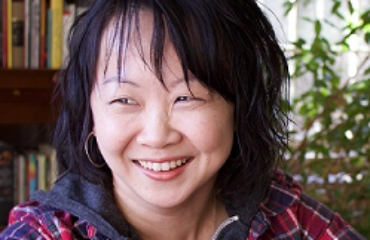DOLOROSA by Molly Rose Quinn
(The Chapel at St. Mary’s School for Girls)
where the pillar falls at the edge of morning the teachers
beg us to tug down our skirts they offer their palms
for our gumballs and your god is here to say that beauty
is easy like cutting teeth and your legs and your legs
and yours and I in the pew wish to scrape down
to nothing cuff myself kneel better and what could be
worthier hair voice and loudly I beg for ascendancy
dear classmates your legs in neat rows pray as you do
with fists up and the sun in here bare pray for safety
the teen saint she is the girl to win it all for I beg my
mariology as she sets the way that girl she never once
begged for sparing she begged for death like wine
she begged the best she supplicated she died this dying
begs for me I give it such pleasure and legs and the pew
and the alb and the bread and all other objects beg to be
candles when you are a candle you can beg to be lit
each of you in the pew you beg to be lit I’ll never shine
bigger as we know teenagers beg to be begged and we do
you girls you begged me to hold you begged me to take
what I took you beg bigger and better and for that
you’ll be queens the chimes chime and bells bell
and dear god I know I can be the greatest girl ever
by anointing all alone and being loved the very best
and she says what is so good about anger god killed
my son for himself I suppose and this halo it’s nothing
I asked for and of course she’ll be lying and your legs
and your legs and yours tanned and the best thing all year.
Listen to Molly Rose Quinn’s reading of “Dolorosa” below…
Back to Table of Contents
Henry Darger, Sacred Heart. ©Kiyoko Lerner 2013 / Artist Rights Society (ARS), New York. (Click to enlarge.)
Molly Rose Quinn selected Henry Darger’s work to accompany her poem and explains: “The girls of Henry Darger’s epic novel, illustrated here in Sacred Heart and elsewhere, were closely derived from popular media (recall the ‘Coppertone baby’ or ‘Morton Salt girl’). The novel itself, undiscovered until Darger’s death, details the girls’ war against child slavery, neglect, and abuse. They are cartoonishly feminine in appearance, divine in their acts, and pure of moral being. The narrative weaves darkly into Christian mythology and Darger’s childhood experiences. My poem, using Mary as its vessel, hopes to crash together female adolescence and religious fundamentalism, therein the inherent mythologizing, fetishism, zeal, envy, lust. I am drawn to these images for their moralizing, their uncertain deviance, their mystic pity, and the great heart’s wink at the literal.”
Please note: Reproduction, including downloading of Henry Darger’s work, is prohibited by copyright laws and international conventions without the express written permission of Artists Rights Society (ARS), New York.



